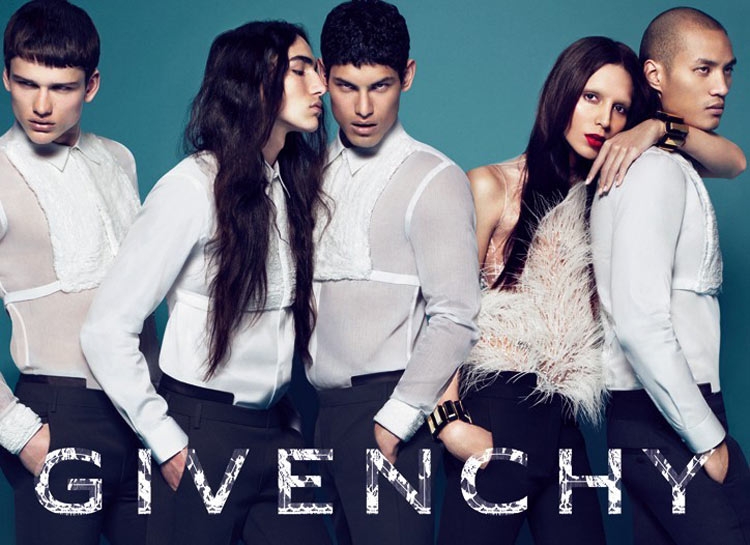From November 13 to 17th, individuals and organizations around the country will participate in Transgender Awareness Week to help raise the visibility of transgender and gender non-conforming people, and address the issues the community faces. With that in mind, it is an apt time to revisit the career of transgender model and former Givenchy creative director Riccardo Tisci’s muse Lea T, one of the first transgender models to fledge a flourishing career in the fashion industry.
Brazilian-born, Italian-raised Lea T has been widely considered “a trans pioneer” since she took the modeling industry by storm when she starred in Givenchy’s Fall/Winter 2010 ad campaign, alongside Mariacarla Boscono, Cat McNeil, Malgosia Bela, and a handful of male models. Lea T had already been on Givenchy’s radar, since joining the Italian design house, where she served as Tisci’s assistance, before ultimately opening up as a transgender model and undergoing a gender reassignment surgery, a process she began in 2008.
But before that, Lea T was known as Leo Cerezo, the son of Brazilian football legend Toninho Cerezo. She told Oprah in 2011 that she had always felt different, even as a child, and for a long time, hoped she was “simply gay,” because that, she says, “would have been easier for her family to accept.”
Regularly subjected to cheap jokes and ridicule as a child and young adult on the macho streets of Brazil and Italy, she said, “I wish I could accept my body like men. It would be much easier for me if I could be a straight guy and have a girlfriend, family and daughters, married, all this normal life. But it’s something in your brain – you feel like you were born in the wrong body.”
In response to years of scorn, a falling out with her father (which was covered by the Brazilian media), and crippling self-doubt, Lea studied the arts and focused on her career, working behind the scenes as an assistant for stylist Patti Wilson. Not long thereafter, she met Riccardo Tisci, who was serving as the creative director of Givenchy at the time, and who Lea told Newsweek, “was so into fashion that he contaminated me with his enthusiasm.”

image: Givenchy
She joined the brand, working at Tisci’s assistant, and at some point down the road, at Tisci’s urging, began to do photo shoots, including Givenchy’s Fall/Winter 2010 campaign. Speaking of the campaign several years ago, Tisci told the New York Times, “Everyone was against it, but we did it, and we did it in a really honest way. And in the end, it turned out to be this big thing, which is amazing.”
While Lea T told The Cut in 2015 that landing modeling jobs “always a surprise because I know working with me is not the easiest thing. You have a lot of controversy, some people like it and other people hate it and it’s political,” major publications and brands have embraced her.
Since her Givenchy debut, she has fronted in no shortage of Givenchy ads and lookbooks, and regularly appeared on the brand’s runway. She landed on the covers of Love and various international editions of Elle, Marie Claire, and Glamour, posed nude for a hotly-discussed French Vogue editorial under the watch of editor-in-chief Carine Roitfeld, and landed a major deal to front a number of global Redken campaigns.
An additional testament to her appeal in fashion? Her placement on Models.com’s “Top 50” list in 2011, an honor bestowed on the industry’s most in-demand models.
As of now, Lea T feels optimistic. She told The Cut, “People are opening their minds. When I started, we were more like jumping in the dark, you know? We didn’t think about being first, because we always existed. Now it’s getting better. There’s much more visibility.”
But she is not content to only make her journey only about her. “We can speak about transgender people, about gay people, about dark skin, about the Asian skin,” she says. “We have all kinds of discrimination and suffering, and that is the work we need to do.”







